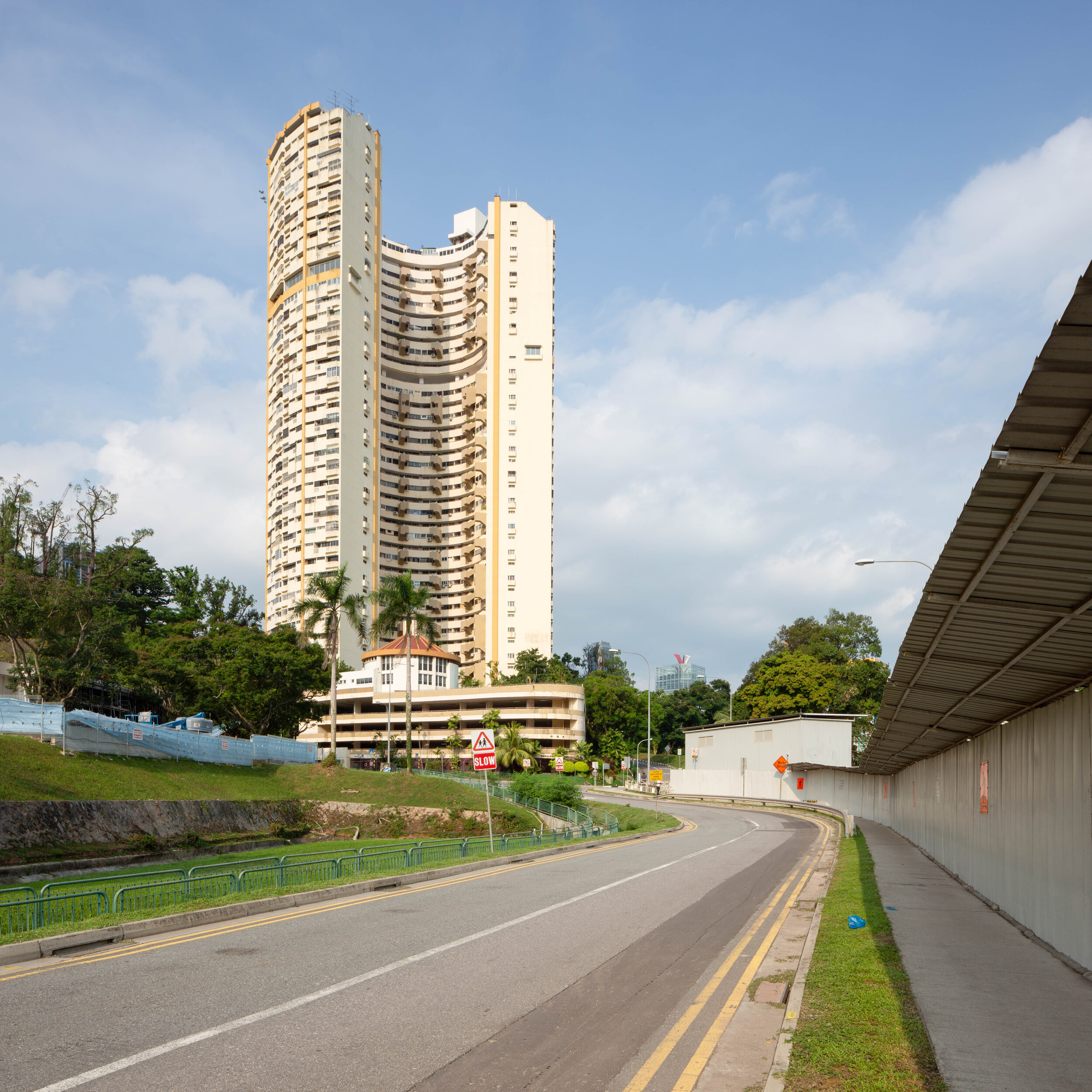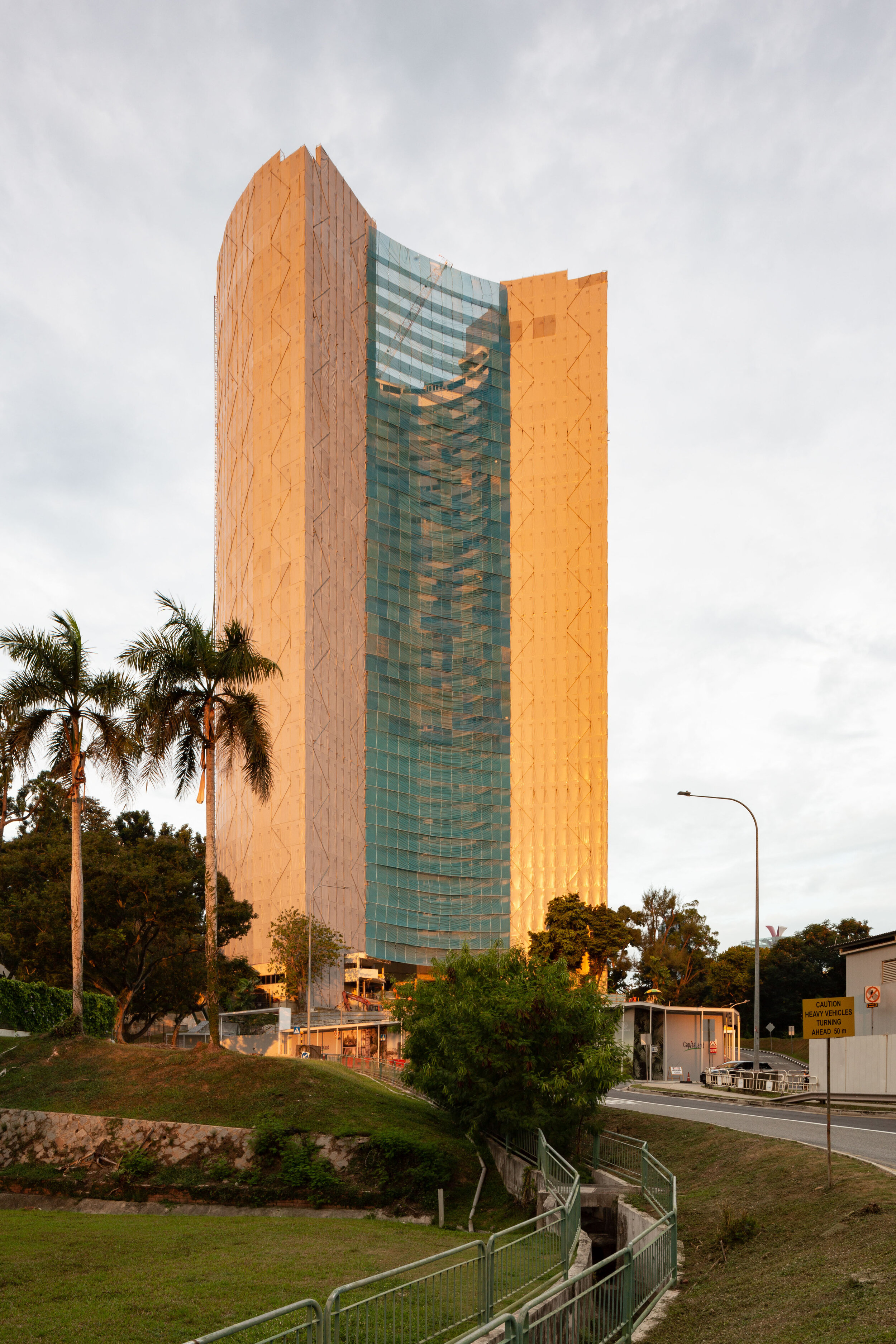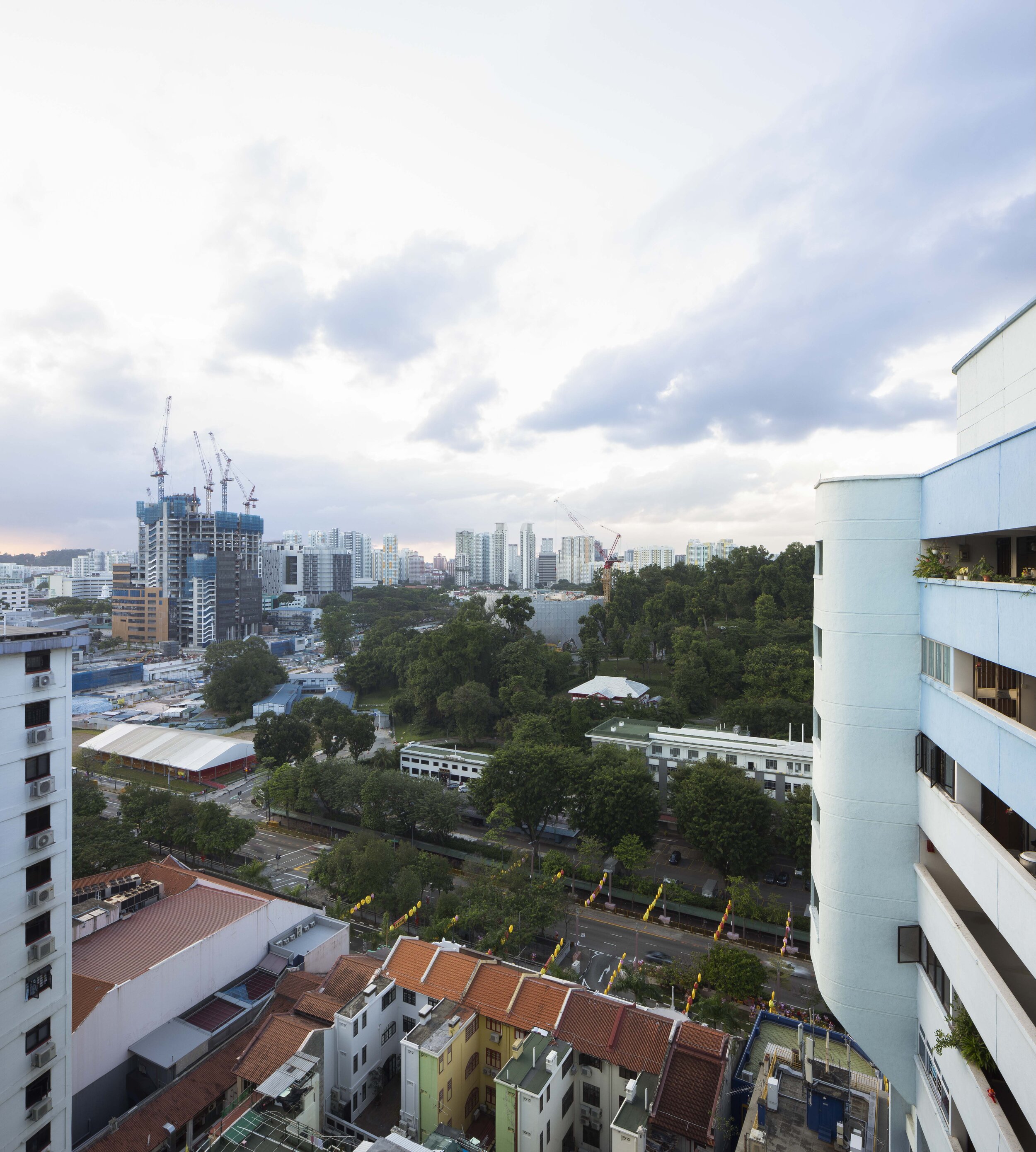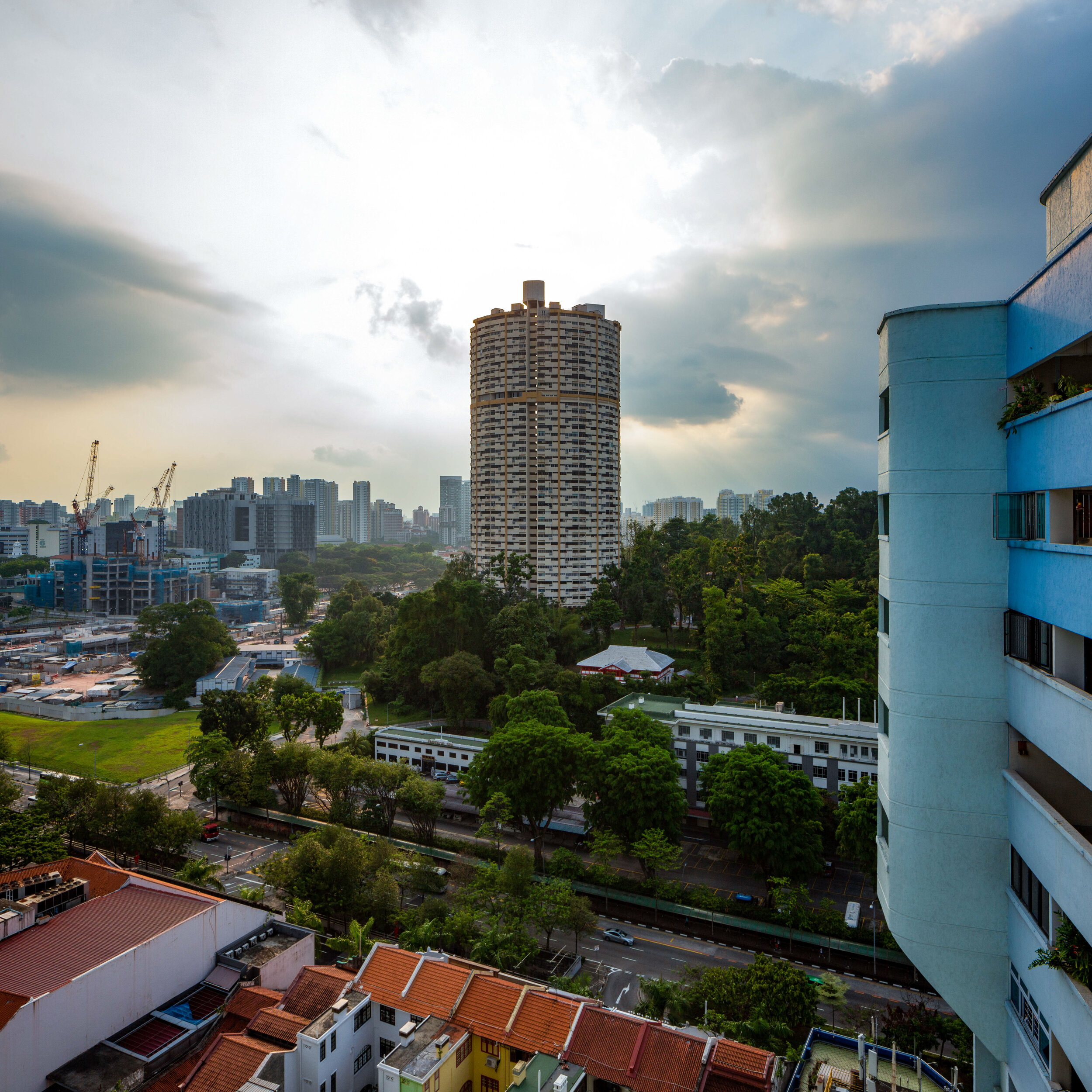Demolition of the Pearl Bank Apartment Nears Completion
The Pearl Bank Apartments
The Pearl Bank Apartment was an iconic brutalist residential skyscraper in Singapore. In 1976 it opened to a period of economic prosperity which was improving the quality of life for almost every resident. While it symbolized the epitome of success during its day, it has since lost its novelty. For the last few months, the building has been meticulously demolished without fanfare. In just a few weeks, it will be gone, leaving room to speculate on its legacy.
The sound-proofing walls along the Pearl Bank Apartments
It is difficult to describe the cultural value of Pearl Bank. There’s no comparison. It isn’t like any building in New York, Cairo or Dubai, because it was a part of Singapore’s complex history: it was built in a time when the future was unclear but looked hopeful; it was built to house families with disposable income when colonial-era kampong neighborhoods were being pulled down; it was built to bring people together, literally, through the C-shaped design. When news of its potential sale started to circulate, an unprecedented effort for conservation within the city-state started. The story even made its way to the New York Times exactly one year ago, and both young and old architects were lobbying and releasing proposals for partial conservation. Unfortunately, the economics of creative destruction won the day. With its demolition, a 38-story landmark in Singapore’s living memory is lost.
At 113 meters tall, the private condominium was inaugurated as the highest and most densely developed residential building throughout Southeast Asia. The building was sold to the Singaporean real estate company, Capitaland, at the cost of over half a billion USD. Capitaland is also responsible for the demolition of another 70s era brutalist tower, the CPF Building. It was torn down in 2017, earning the distinction as the second tallest voluntary demolition project in the world at 561 feet tall. Meanwhile, the Pearl Bank will take the unlikely honor of being the tallest inhabited residential building to be voluntarily demolished in the world.
Crewman walking around the demolition site
In Singapore’s court of public opinion, there is a keen awareness of aesthetics in urban planning which prizes prosperity and laments stagnation. The fear of losing its special status as a stable hub in Asia evokes images of poverty and corruption witnessed in the less wealthy Southeast Asian nations, and any major building perceived as economically stagnating is deemed a risk to the community. Demolition is considered one of the most effective tools to avoid urban stagnation. It also evokes the memory of early independence when heartland housing estates like Toa Payoh meant the demolition of an entire seedy neighborhood. In a Marie Kondo-esque way, it is almost a point of pride to demolish such a significant building.
During debates on whether to demolish or renovate in Singapore, the condition of disrepair is often cited as the primary reason to tear down entire buildings. When Rice Media wrote about the struggle to conserve Pearl Bank in 2017, it documented disrepair as a clear explanation for why owners would prefer demolition. The process of selling to luxury condominium developers is faster and more profitable for the residents, and it seems to be better for the economy. The common but mistaken belief goes that if such a building could devolve into such a state, there is an issue with it and it can potentially drag down the neighborhood market through a recession or even crime. Demolition is done for the stability of the community.
Environmental Alarm Bells Ringing
The demolition of Pearl Bank could, and hopefully will be, a catalyst for more conversation about the environmental consequences of demolition and the construction industry. This is a case I made in my first post about the Pearl Bank. Since then, two news events have transpired which help to elevate this already dire conversation: a timely article from the Guardian and a decisive petition run by Construction Declares reaching Singapore.
The end of demolition in favor of conservation and renovation would be an incredibly effective step from the construction industry in the fight against climate change. This very argument is made in Oliver Wainwright’s article for the Guardian titled; The case for ... never demolishing another building.
The piece starts with a startling fact, reporting that, “in the UK, the construction industry accounts for 60% of all materials used, while creating a third of all waste and generating 45% of all CO2 emissions in the process,” (The Guardian). If current trends continue, he writes, the resource extraction could triple in just thirty years, and waste production could triple in eighty years.
His sources discuss a circular approach to construction, considering not just the resources coming into buildings, but also the practical applications of resourcing being taken out of buildings. Dutch architect Thomas Rau described Wainwright his proposal for revolutionizing the system, saying, “every part of a building would be treated as a temporary service, rather than owned,” (The Guardian). Reframing the valuation of resources could become a radical way of addressing climate change.
Lastly, in Singapore, several architecture firms and structural engineers have signed a new petition holding themselves accountable to, among other matters, the following text, “We will seek to upgrade existing buildings for extended use as a more carbon-efficient alternative to demolition and new build whenever there is a viable choice.”
A quote taken from a Construction Declares petition signed by some of the most significant architects and structural engineers in Singapore.
Conclusion
With the Pearl Bank Apartment down to just six floors now, it is incumbent to consider its legacy as a poster boy call to action, no longer can the economy rely on fairy tales of eternal growth. To save the world, nobody should ever demolish another savable building. And that means the Golden Mile Complex, Golden Mile Tower and People’s Park Complex.
Thank you so much for reading my post. Check me out on social media with the links below, and please press like and comment to help me satisfy the algorithms















